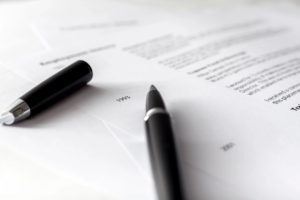As the initial stages of the hiring process become increasingly automated, the chances of a candidate standing out with a traditional resume are becoming increasingly slim.
“Dimension” is the new buzz word among the hiring professionals today. Resumes without it are considered flat, and sometimes even boring. Recruiters have even admitted to eliminating some candidates whose resumes do not display some sort of dimension.
This shift means that it is critical that your resume be more than just a look back at a summary of tasks you performed in each job. It needs to position you forward!
So how do you add “dimension” to the resume?
Think outside the box with a functional resume.

A functional resume does the following:
- Introduces your skills
- Summarizes each of your positions
- Lends credibility to your successes
- Sets you on the course looking ahead
The key is to add a component or a visual that supports who you are and how you function.
Here are five major components to building a functional format resume.
1. Highlights of Your Qualifications
Positioned at the top of the functional resume, this summary should not only note what you do well in business, but also give insight into how that translates into your personal life. This should include your best qualities, with particular emphasis on those that relate to the career you are pursuing.

2. Summary Sentence
Positioned right under your title and company for each job, this is a sentence that describes your role, using words that indicate how you functioned. An example of that would be: “served as the point person for the department.” This phrase indicates collaboration, organization, and someone who is good at pulling complex projects together, all words or phrases that should be included in the skill section.
3. Your Biggest Takeaway
Under each position’s detail, include a short summary of at least one skill you picked up or were able to hone while in that position. Relating this to a challenge you had can often prompt questions that move the interview into a conversation. An example of this would be: “successfully navigated the pitfalls of supervising former peers.”
4. Proficiency and Skills
Positioned at the bottom of the functional resume, this section should be a summary of proficiencies as it relates to technology, programs required for the position, and job-related accomplishments. You can add in anything thatyou are really good at personally, even if it is not considered pertinent to the position. A few examples would be: “photography,” or “gourmet cook with vegetarian specialty.” This gives the hiring professional a little bit more into who you really are — and it can prompt a softer interview.

5. Link to a Profile Site
Set up similar to a mini website, a profile site is rapidly becoming the most important component to becoming “dimensional.” This site should include support for the skills or work you’ve done that are listed on the resume. Like a website, there is typically an “About Me” section, along with other buttons that can be personalized. A photographer might add a “Photography” button, adding photos that tell an interesting story. Awards or recognitions could be listed or animated on another page. This is where you get to be creative, and it gives you the advantage for a more conversational interview.
In the end, a functional format resume will serve any candidate better than the more traditional resume will. The more relatable you are to the hiring professionals, the more likely you are to get hired. And that’s the name of the game, isn’t it?
button